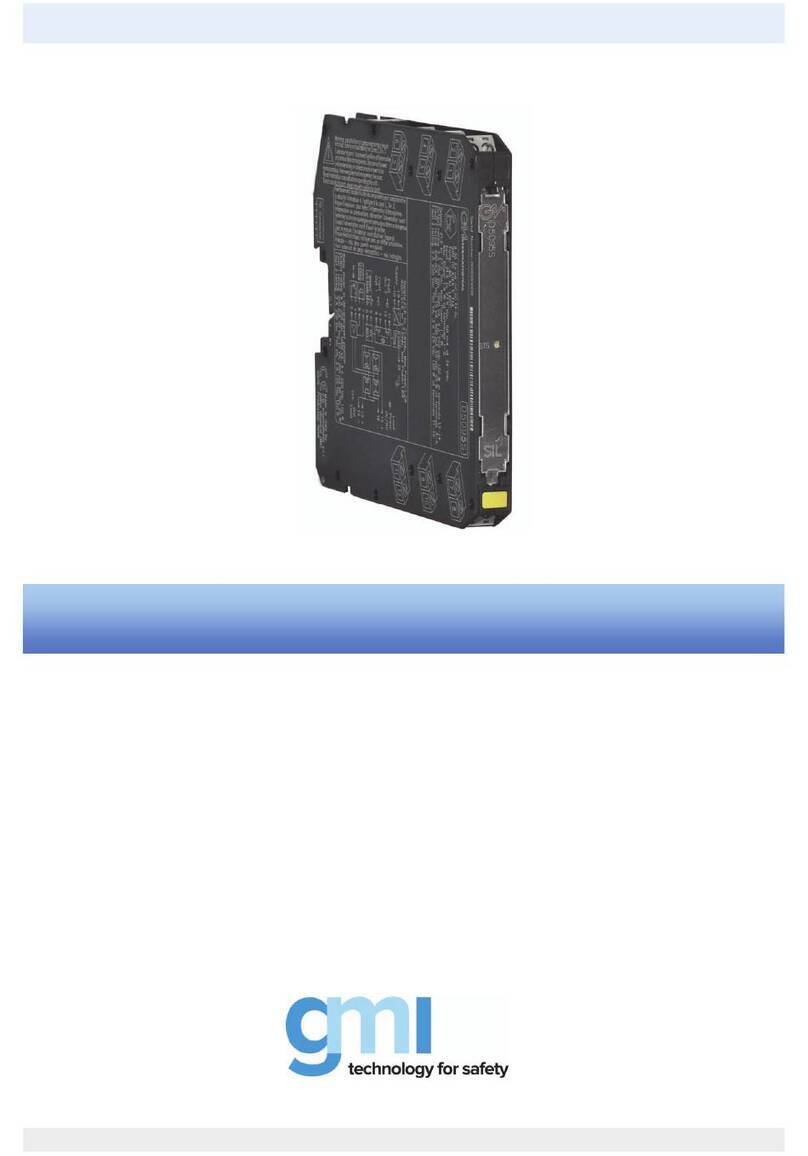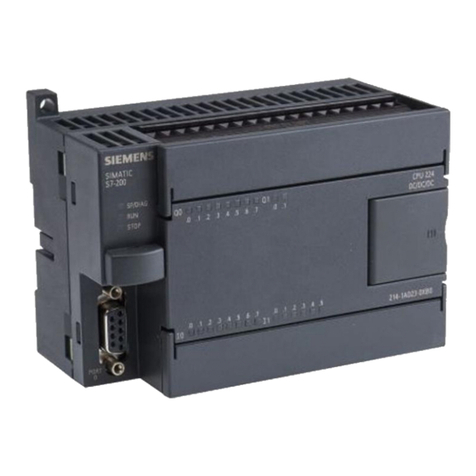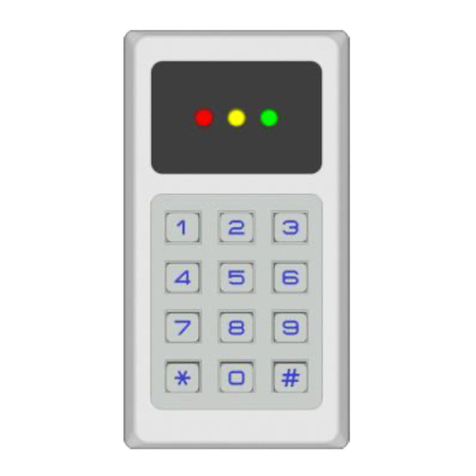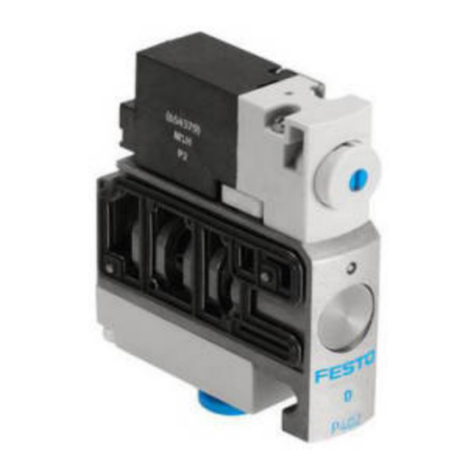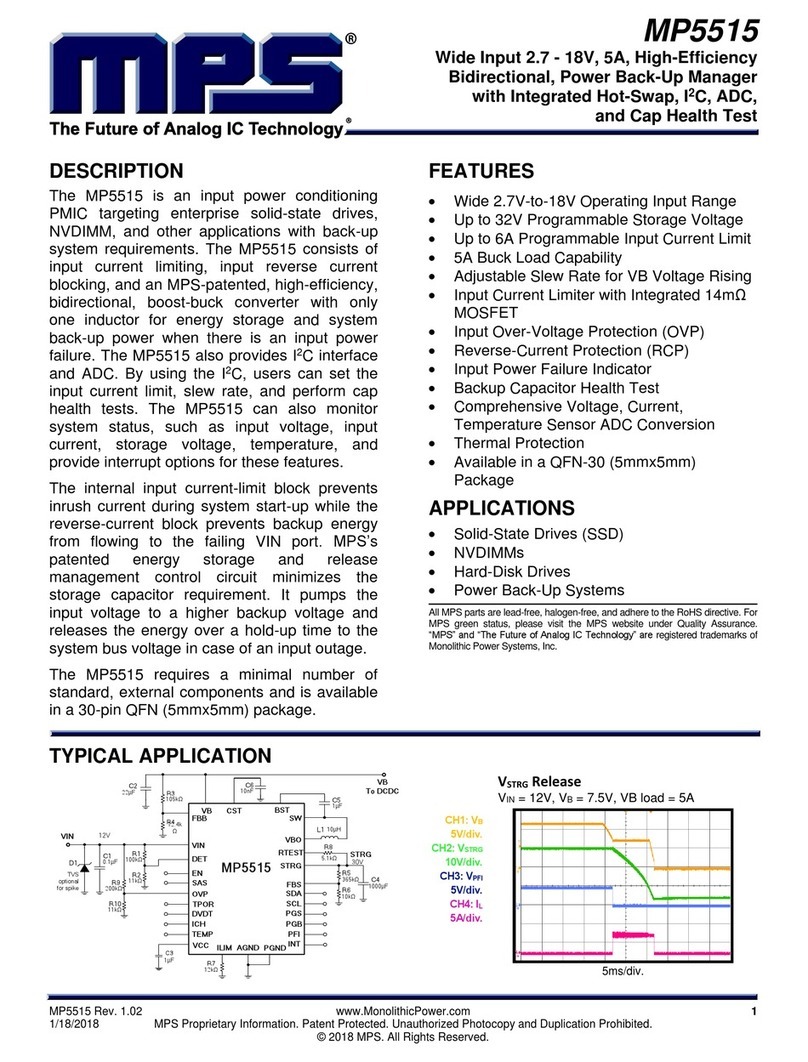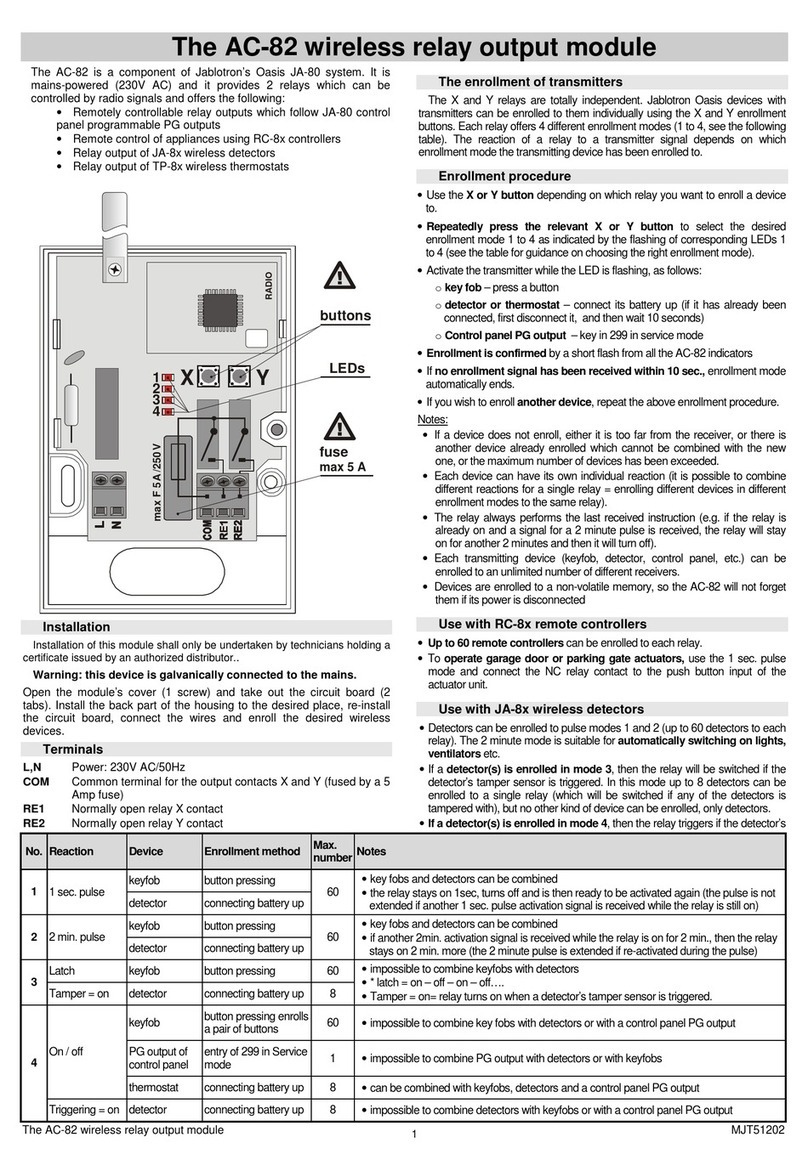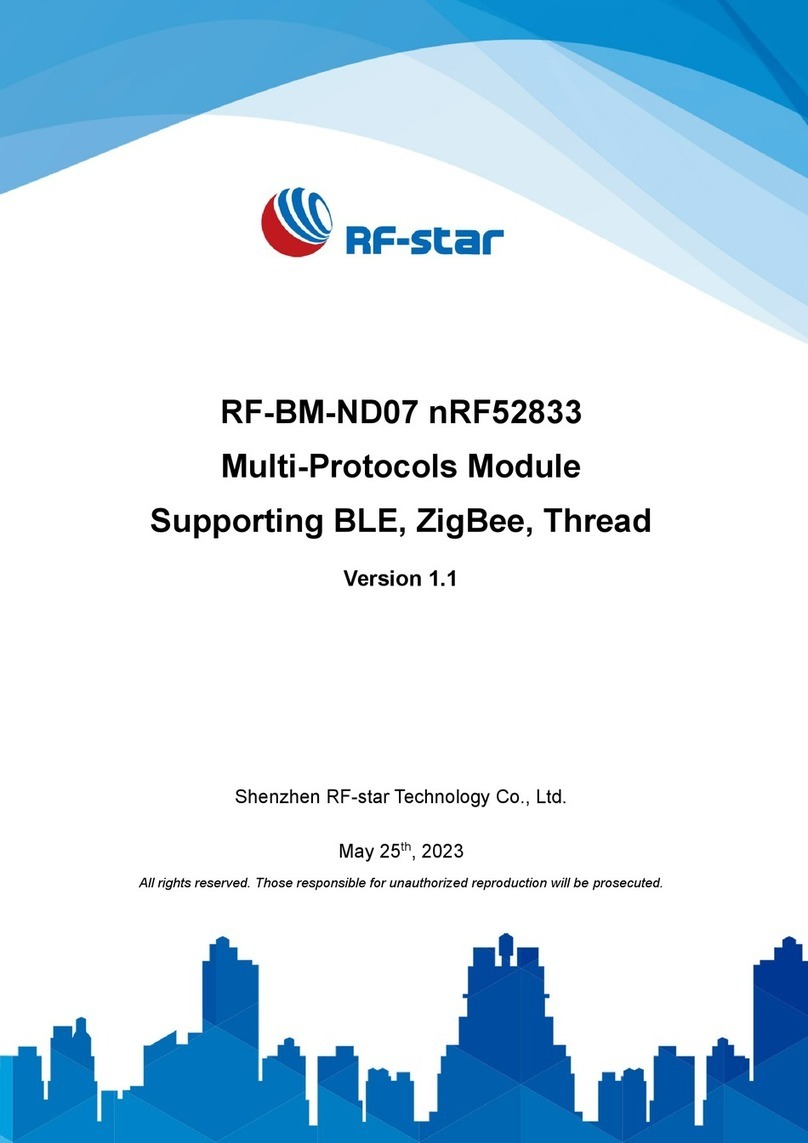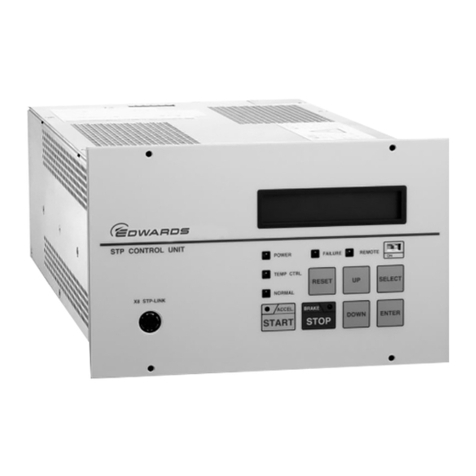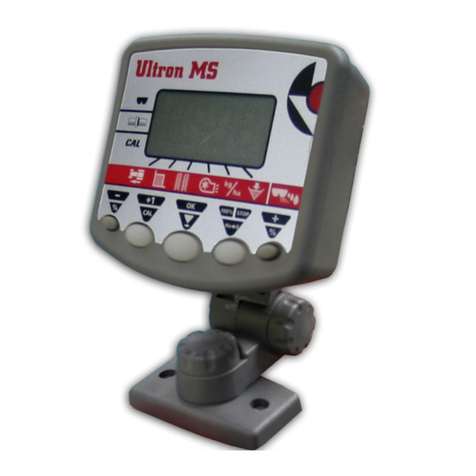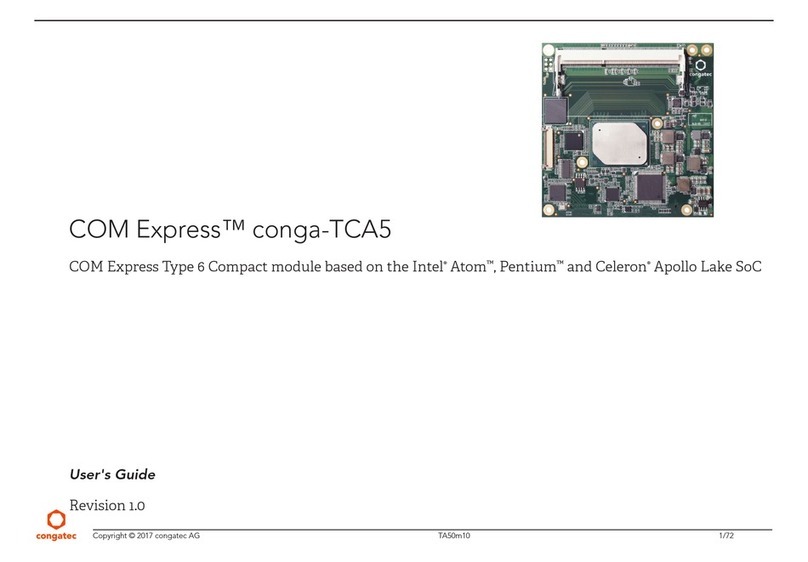Governors America DDM-101 User manual

1
DDM101
Dual Driver Module
e DDM101 is an accessory module whose function is to drive two independent, feed-
back-equipped GAC electronic actuators (see TABLE 1) from one GAC
ESD Electronic
Speed Device
(see TABLE 2) is module is primarily installed where two actuators
are required for a single engine i.e., two independent diesel fuel pumps or two gaseous
throttle body actuators (ATBs).
13
2
INTRODUCTION
SPECIFICATIONS
POWER INPUT
DC Input Voltage 18 - 32 VDC(Nominal 24V DC)
Transient protected to +/-250 VDC
Actuator 1 Current Up to 15 Amps, Short Circuit protected
Actuator 2 Current Up to 15 Amps, Short Circuit protected
PWM Drive from Governors 550 Hz Min from 12-32 V DCMax am-
plitude
Actuator Position Sensors 5V DC excitation 1 to 4V DC output
ENVIRONMENTAL
Operating Temperature 40° to +85°C
Humidity up to 100%
RELIABILITY
Vibration 1G, 20-100 Hz
Shock 10 G (11ms)
EMC PER CE EN55011, EN50081-2, and
EN50082-2
INSTALLATION
In the described applications, the desire is to drive two feedback-equipped, electric
actuators equally so that either banks or cylinder groups receive equal fuel levels. e
actuators should be of similar types with similar position sensors with equal outputs. To
equalize the fuel to each cylinder bank the DDM101 has two advanced features, fuel and
exhaust temperature balance. e fuel balance feature will correct any unbalances in
the fuel systems by equalizing the fuel being delivered by each actuator. Any dierences
noted by the accurate actuator position sensors will be nulled out by the electronics so
that the position sensors will track equally throughout the range, unless compensated
with the FUEL BALANCE.
Engine power should be balanced by measuring the exhaust gas temperature readings at
each bank. Some mechanical calibration of the actuator linkage and the fuel rack will be
required to assure that the systems are nearly alike at one fuel delivery point. is can
be either idle fuel or any midpoint of load control. e FUEL BALANCE adjustment
is then used to set equal engine cylinder power at near 100% of engine load. In order
to achieve minimum dierence at any load point, the mechanical linkage adjustments
should be set equal at 20% power with the electrical adjustments set equal at 80% power.
Each actuator driver circuit has its own GAIN [ACT 1 and ACT 2] adjustment to
optimize the feedback control loop response. (See TABLE 6)
Refer to (WIRING DIAGRAM 4.) for proper connections. It is suggested that the
DDM101 be mounted along side the
Electronic Speed Device (ESD)
. When mounting
the unit, attach it to a vertical surface to prevent any moisture from collecting on the
circuit board. e normal precautions outlined in the
ESD
manual should be followed
for the DDM101 as well.
© 2019 Copyright All Rights Reserved
DDM101 Duel Driver Module 1.15.19 PIB 4134 F

2
ACTUATOR MODEL NO. DESCRIPTION
ATB T1F Series 25mm to 40mm Bore Size / 12 or 24 VDC / Packard Connector / Sealed to 5.0 Bar
ATB T2F Series 45mm to 65mm Bore Size / 12 or 24 VDC / Packard Connector / Sealed to 5.0 Bar
ATB T3F Series 75mm Bore Size / 12 or 24 VDC /Packard Connector / Sealed to 5.0 Bar (Also listed Under T4)
ATB T4F Series 75mm to 95mm Bore Size / 12 or 24 VDC / Packard Connector / Sealed to 5.0 Bar
ADD175F Bosch ‘P’ 3000 - 7000 Fuel Injection Pump/ 12 or 24 VDC/ Right hand Rack/ Packard Connector
ADD176AF Bosch ‘A’ Size Fuel Injection Pump/ 12 or 24 VDC/ Le Hand Rack/ Packard Connector
ACE275K Bosch ‘P’ 3000 - 7000 Fuel Injection Pump/ 24 VDC/ Heavy Duty Bearing Retention/ Packard Connector
ACE295F-24 Bosch ‘P’ 9000 - 10,000 Fuel Injection Pump/ 24 VDC/ Packad Connector with Mating Connector
TABLE 1: Recommended GAC Feedback Sensor Equipped Actuators
GOVERNOR MODEL NO. MULTI VOLT UNITS/ ISOCHRONOUS, VARIABLE & DROOP OPERATION/ ADJUSTABLE
PID/ IDLE SPEED ADJUSTMENT/ AUXILLARY ACCESSORY INPUT
ESD5111 Standard Unit
ESD5131 Switchable So Coupling and Lead Circuit
ESD5221 Single Element Speed Switch / 10 Amp Relay Output
TABLE 2: Recommended GAC Governor Controllers
4WIRING DIAGRAM
© 2019 Copyright All Rights Reserved
DDM101 Duel Driver Module 1.15.19 PIB 4134 F

3© 2019 Copyright All Rights Reserved
DDM101 Duel Driver Module 1.15.19 PIB 4134 F
5WIRING
e
Electronic Speed Device (ESD)
used with the DDM101 must be of the actuator
voltage driver type with a PWM output and not a current driver type (see Table 2). In
normal actuator usage with a GAC
ESD
, one side of the actuator is typically at near
ground level voltage. Connect Terminal B on the
ESD
, (the low side of the actuator
drive) to Terminal 26 on the DDM101. Connect Terminal A on the
ESD
, (the high side
output of the actuator), to Terminal 25 on the DDM101. A jumper must be installed
between Terminals 9 and 10 on the DDM101.
CONNECTING TO THE ESD
CONNECTING TO THE ACTUATORS
Before wiring the actuators to the DDM101 decide whether droop operation is
required in the application.
NO DROOP
If droop is not required then connect the actuators as shown in (WIRING DIAGRAM
4) directly to the DDM101. A jumper must be installed between Terminals 9 and 10
on the DDM101.
DROOP TO ACTUATOR 1
If your application requires droop, then the current in Actuator 1 is best suited for
the droop signal. To utilize this signal, disconnect Terminal 26 on the DDM101 from
Terminal B on the
ESD.
Connect Terminal 3 [the minus (-) of Actuator 1 on the
DDM101] to Terminal B on the
ESD
. Connect Terminal 3 on the DDM101 to Terminal
E on the
ESD
. Droop may be adjusted, proportional to the current in Actuator 1, on the
ESD
. See the
ESD
Manual for droop adjustment details.
DROOP TO ACTUATOR 2
If the application requires that droop be proportional to Actuator 2, remove the jumper
from Terminals 9 and 10 and disconnect Terminal 26 on the DDM101 from Terminal B
on the
ESD
. Connect Terminal 10 on the DDM101 to Terminal B on the
ESD
. Connect
Terminal 9 of the DDM101 to Terminal E on the
ESD
.
OTHER WIRING ISSUES
It is suggested that each position sensor cable be of a three wire shielded type with the
shields connected only to the case on the DDM101. e actuator feedback sensor (AB
feedback sensor type) is a three, sensor-terminated wire with an AMP connector, refer
to (TABLE 3.) for accessory parts. For proper connection from the feedback sensor or
the cable harness to the DDM101 refer to (TABLE 4). Case ground (right or le corner
screw) should be connected to battery minus (Terminal 7) with a separate cable for the
best EMC ratings. Cables used on the terminals for Actuator 1 or 2 handle full actuator
current, therefore they must be sized properly to handle the current. (see TABLE 5)
ACTUATOR POSITION SENSOR
MATING CONNECTOR
POSITION SENSOR
MATING HARNESS
ADD175F-12/24 EC1523 CH1243
ADD176AF-12/24 EC1515 CH1515
ACE275K EC1515 CH1515
ACE295F-24 EC1515 CH1515
ATB T1 Series EC1523 CH1243
ATB T2 Series EC1515 CH1515
ATB T3 Series EC1515 CH1515
ATB T4 Series EC1523 CH1243
TABLE 3: Accessory Parts
TABLE 4: Connection - Feedback Sensor / Cable
CONNECTION
Position Sen-
sor
Connector
Harness
CH1515
Harness
CH1243 DDM101
Signal Number Color Number Color Pin Color Act 1 Act 2
+5V 1 Red 1 Red A Red 15 (+) 22 (+)
GND 2 Black 2 Black B Black 13 (-) 20 (-)
Out 4 White 4 White C White 14 (‹) 21 (‹)
RECOMMENDED WIRE SIZE
Actuator Recommended Wire Size for Typical Application*
ATB T1F/T2F/T3F/T4F Series 14 AWG
ADD175F 16 AWG
ADD176AF 16 AWG
ACE275K 16 AWG
ACE295F-24 16 AWG
TABLE 5:
*Compensation for length and temperature aects wire size.
6ADJUSTMENTS
Before starting the engine, check and/or restore POT values to the factory settings. (see
TABLE 6.)
FACTORY SETTING OF THE POTENTIOMETERS
Potentiometer Type Setting
ACT 1
Gain 270˚Turn 30˚
Stability 270˚Turn 50˚
ermocouple 270˚Turn 50˚
ACT 2
Gain 270˚Turn 30˚
Stability 270˚Turn 50˚
ermocouple 270˚Turn 50˚
GAIN
Temp Balance 270˚Turn 50˚
Governor 270˚Turn 30°
Fuel Balance 25 Turn 12 Turns CW
Start the engine and follow the setup procedure outlined in the
ESD
Manual that is
being used.
With the engine running, stable operation should be achieved by properly adjusting the
ESD
and the following:
TABLE 6: Factory Settings
Each actuator driver circuit has its own actuator GAIN [ACT 1 and ACT 2] adjustment
on the DDM101 to optimize the feedback control loop response. Adjust ACT 1 and ACT
2 as high as possible without developing engine or actuator instability.
Adjust Actuator 1 rst by rotating the ACT 1 GAIN potentiometer CW until instability
in the engine develops. Gradually move the adjustment CCW until stability returns.
Move the adjustment 1/8 of a turn CCW to ensure stable performance. Next, adjust the
ACT 2 GAIN potentiometer following the above described method.
Poke or disturb the actuator to try to induce instability. Adjust the GAIN and STABILITY
adjustments for best response from the actuators.
e SPEED and GAIN adjustment on the
ESD
and the GAIN [ACT 1 and ACT 2]
adjustments on the DDM101 can have some interaction. It is possible to turn one up
and the other down and get similar results. e GAIN adjustments on the
DDM101 must not be turned to low or speed control performance may
suer. A mid-range setting or higher for all of the GAIN adjustments is recommended.
POSITION LOOP GAINS ADJUSTMENT
NOTE
ACTUATOR STABILITY ADJUSTMENT
Each actuator has its own actuator STABILITY [ACT 1 and ACT 2] adjustment to
optimize system stability. Adjust both [ACT 1 and ACT 2 STABILITY] adjustments as
high as possible without engine or actuator instability.
Adjust Actuator 1 rst by rotating the ACT 1 STABILITY adjustment CCW until
instability in the engine develops. Gradually move the adjustment CW until stability
returns. Move the adjustment 1/8 of a turn CW to ensure stable performance. Next,
adjust Actuator 2 via the ACT 2 STABILITY adjustment following the above described
method.
Poke or disturb the actuator to try to induce instability. Adjust the GAIN and STABILITY
for best response of the actuator.

4© 2019 Copyright All Rights Reserved
DDM101 Duel Driver Module 1.15.19 PIB 4134 F
FUEL BALANCE ADJUSTMENTS
e FUEL BALANCE adjustment allows for equalization of the fuel being delivered by
each actuator. With the engine running at no load, measure the DC voltage output of the
feedback sensors from each actuator. Voltage measurement for Actuator 1 is taken across
Terminals 13 and 14. Voltage measurement for Actuator 2 is taken across Terminals 20
and 21. Both voltage measurements should have an operational range of 1 to 4 VDC.
If the voltage readings are not equal, adjust the FUEL BALANCE potentiometer on the
DDM101 until the voltage readings are equalized and the exhaust temperatures are
balanced.
GOVERNOR GAIN ADJUSTMENT
With the engine running at rated speed, the PID system in the ESD can be adjusted for
optimum performance (see the ESD’s manual).
For best performance, the ESD’s GAIN adjustment should be set between 40-60% of
range. If the ESD’s GAIN adjustment is below 25% the DDM101’s GOVERNOR GAIN
adjustment should be rotated CCW to a lower setting. e ESD’s PID settings will have
to be readjusted for optimum transient performance (refer to the ESD’s manual).
Adjusting the DDM101 can also be accomplished by analyzing the ESD’s PWM voltage
input to Terminals 25 and 26 on the DDM101. e desirable voltage reading between
Terminals 25 and 26 should measure 7 VDC at no load and 14 VDC at full load. If the
measured voltage is lower than the desired range, the DDM101’s GOVERNOR GAIN
adjustment is set too high and should be rotated CCW to a lower setting. e voltage
across Terminals 25 and 26 on the DDM101 should increase. If the measured voltage is
lower than the desired range, the DDM101’s GOVERNOR GAIN adjustment is set too
low and should be rotated CW to a higher setting. e voltage across Terminals 25 and
26 on the DDM101 should decrease.
EXHAUST TEMP DIFFERENCE MONITORING AND CONTROL
e DDM101 requires the use of exhaust temperature thermocouples to balance the load
precisely with the dynamic balancing function.
Placement of thermocouples in the exhaust gas stream does not
guarantee that equal measurements provide equal power from each
bank. Exhaust temperature is, however, a good indication of balance and the exhaust
temperature control loop will actively trim the system.
With the installation of two industrial rated Type K type thermocouples in the exhaust
pipe of each bank, the DDM101 can measure and track two exhaust temperatures.
e thermocouple adjustments (THERMOCOUPLE 1 & THERMOCOUPLE 2) are
calibrated at the factory to receive equal input signals from the thermocouples. If a
dierence in either bank’s exhaust temperature is measured by the DDM101, the
control loop will readjust the fuel balance automatically to minimize the dierence. If
a measured dierence is still found, the operator can manually reduce the unbalance
and increase the temp control loop authority by a CW rotation of the TEMP. BAL GAIN
adjustment.
If at any time, one or both of the thermocouples signals are lost (open circuit detected)
the TC 1 or TC 2 fault LED will light and the balancing function will shut o. (see
TABLE 7)
Do not alter the factory settings of THERMOCOUPLE 1 or
THERMOCOUPLE 2 adjustments unless a signicant unbalance
exists. If a balance does occur, rst try to correct the issue using the standard mechanical
and electronic balancing methods described above. If a problem persists, determine
which exhaust channel is higher in temperature and adjust the bank’s THERMOCOUPLE
adjustment CCW to equalize the exhaust temperature. Adjusting the cooler banks
THERMOCOUPLE adjustment CW will equalize the exhaust temperature as well.
CAUTION
WARNING
RACK POSITION-MONITORING
With power applied to the DDM101 and before starting the engine, measure the voltage
at the Terminals 16(+) & 17(-). It should be adjusted to zero Volts by the Actuator 1
Oset (A1 O) for Actuator 1 (closed position) and at Terminals 18(+) & 19(-) by the
Actuator 2 Oset (A2 O). At maximum positions the voltage at the above-mentioned
terminals should be 1 Volt and can be adjusted by Actuator 1 Gain (A1 G) and Actuator
2 Gain (A2 G) respectively. To manually open the actuator, remove the wire from
Terminal A on the
ESD
and connect the wire to Terminal F on the
ESD
. Adjust A1 G
and A2 G for 1 Volt output at Terminal 16 and Terminal 18. Reconnect the wire back
to Terminal A on the
ESD.
LED FUNCTION
ACT 1 Actuator drive circuit 1 is receiving a drive signal from the control.
ACT 2 Actuator drive circuit 2 is receiving a drive signal from the control.
TC 1 FAULT ermocouple 1 has a fault or open circuit.
TC 2 FAULT ermocouple 2 has a fault or open circuit.
EXHAUST
TEMP 1
Unbalances in exhaust temperatures; control is actively trimming fuel to actuator 1 to
rebalance the system.
EXHAUST
TEMP 2
Unbalances in exhaust temperatures; control is actively trimming fuel to actuator 2 to
rebalance the system.
GOV DRIVE Drive signal from external governor is being removed to open up the throttle.
TABLE 7:
CAUTION e sensor is easily damaged so take caution when installing the sensor.
Use Type-K wire and connectors only. Do not mix dissimilar metals.
NOTE e sensor includes a weld bung. Drill and weld, then insert sensor
using below procedure.
EGT TEMPERATURE SENSOR INSTALLATION PROCEDURE
1. Apply thread sealant to the sensor.
2. read the sensor nger tight into the location from the application consid-
erations.
3. Once complete, turn the sensor 2 full turns past nger tight.
NOTE
e exhaust temperature probe is located in the engine exhaust outlet
as near as possible to the point where all of the cylinders merge. Alter-
natively, the sensor can be placed in the manifold outlet pipe. A weld
bung or tapped hole must be used and care should be taken such that
the tip of the probe is well within the outlet exhaust ow. e sensor
is mounted via a 1/8 in. NPT tting. Drill and tap the determined
mounting location using the provided dimensions.
Exhaust Gas Temperature Sensors, part number STE101: Type K ermocouple
with 1200°F (650°C) Maximum. Mating Connector Included.
Other manuals for DDM-101
2
Other Governors America Control Unit manuals

Governors America
Governors America ESD2100 Series User manual

Governors America
Governors America ESD2300 Series User manual

Governors America
Governors America SYC6714 User manual
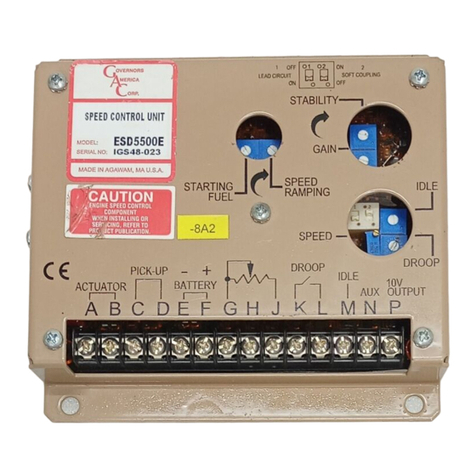
Governors America
Governors America ESD5500E Series User manual

Governors America
Governors America ESD2200 Series User manual

Governors America
Governors America ESD5300 Series User manual
Popular Control Unit manuals by other brands
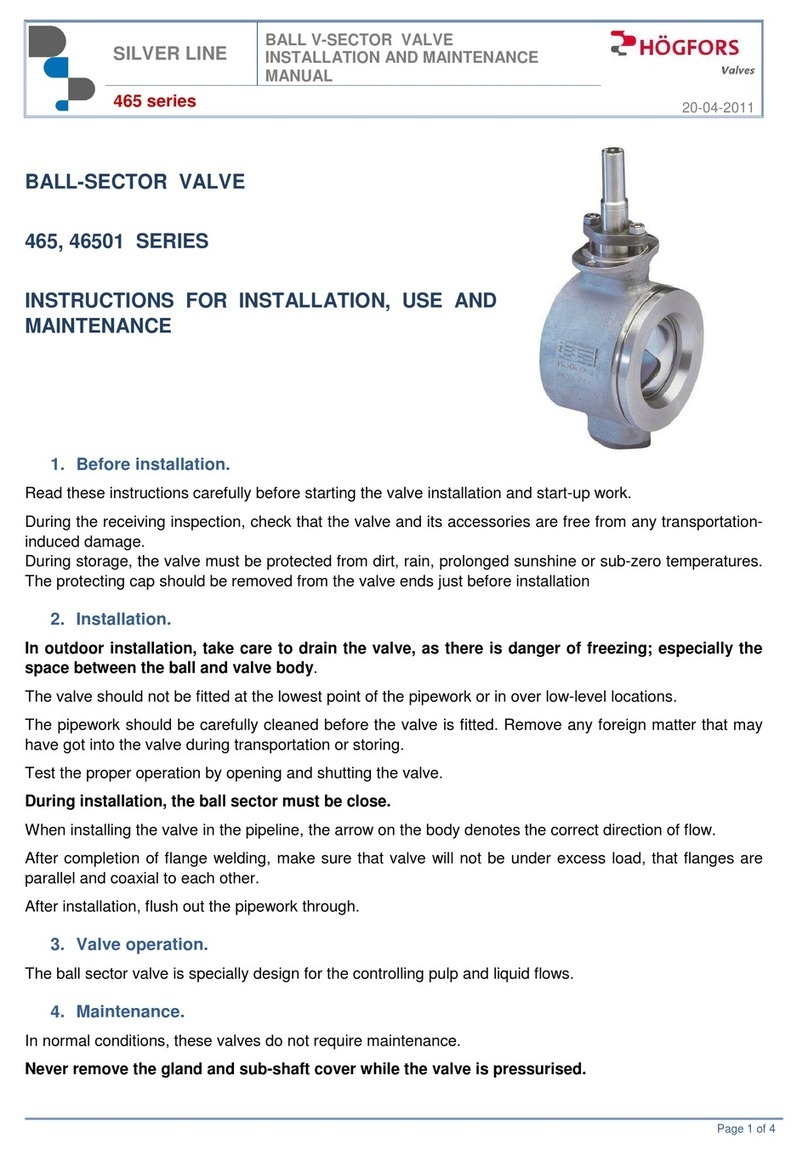
Hogfors
Hogfors 465 Series Instructions for installation, use and maintenance
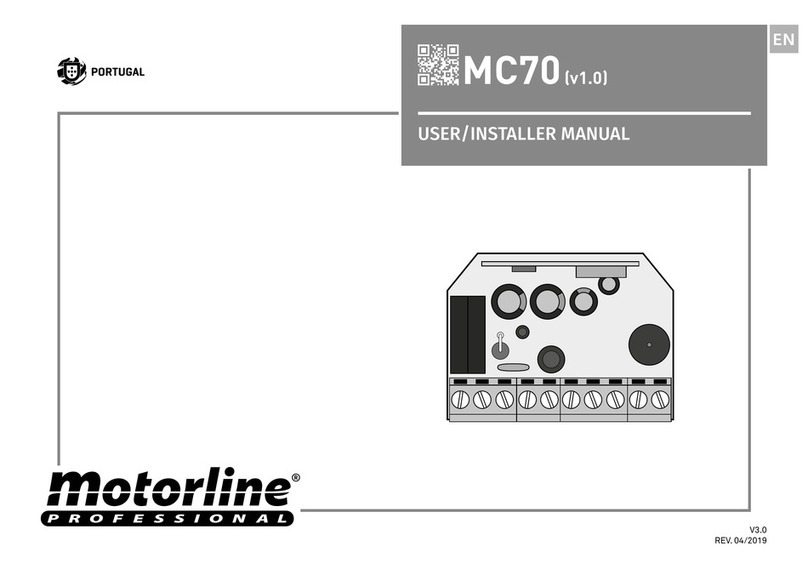
Motorline professional
Motorline professional MC70 User& installer's manual
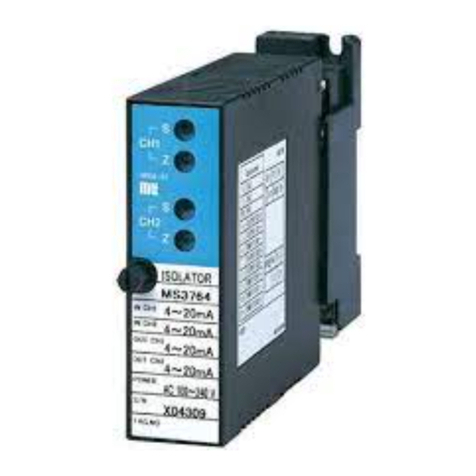
MTT
MTT MS3764 user manual
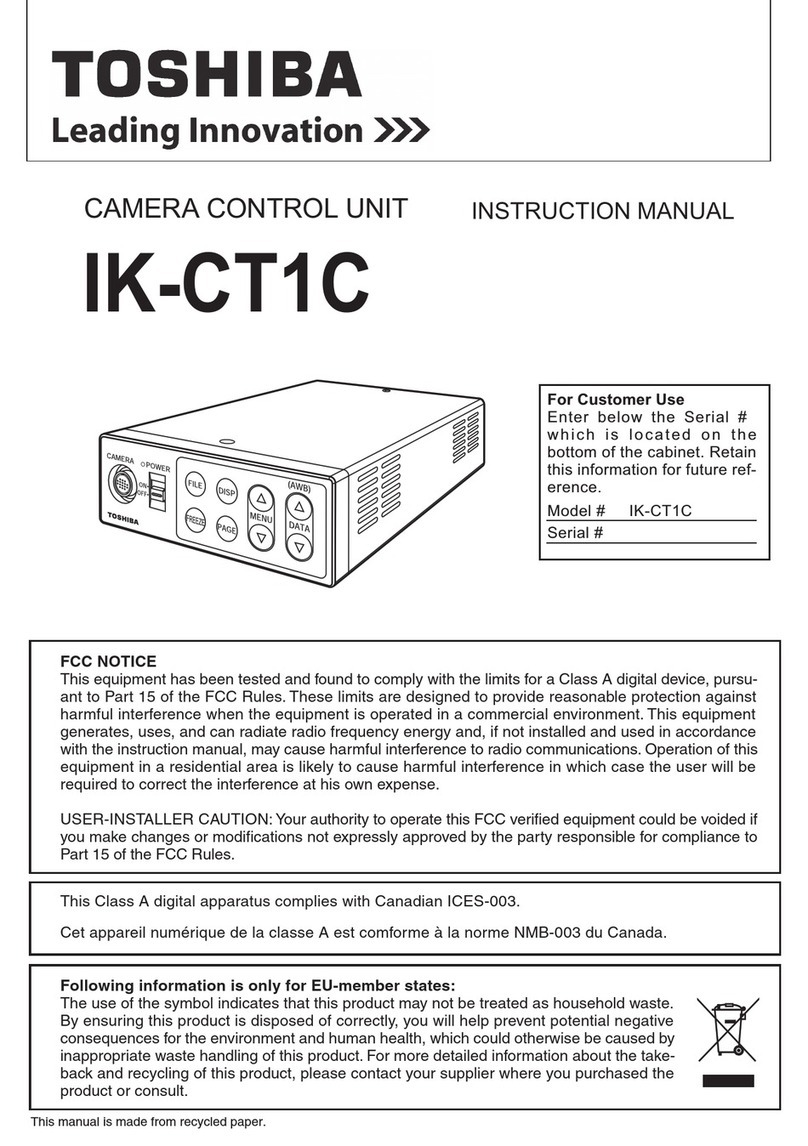
Toshiba
Toshiba IK-CT1C instruction manual
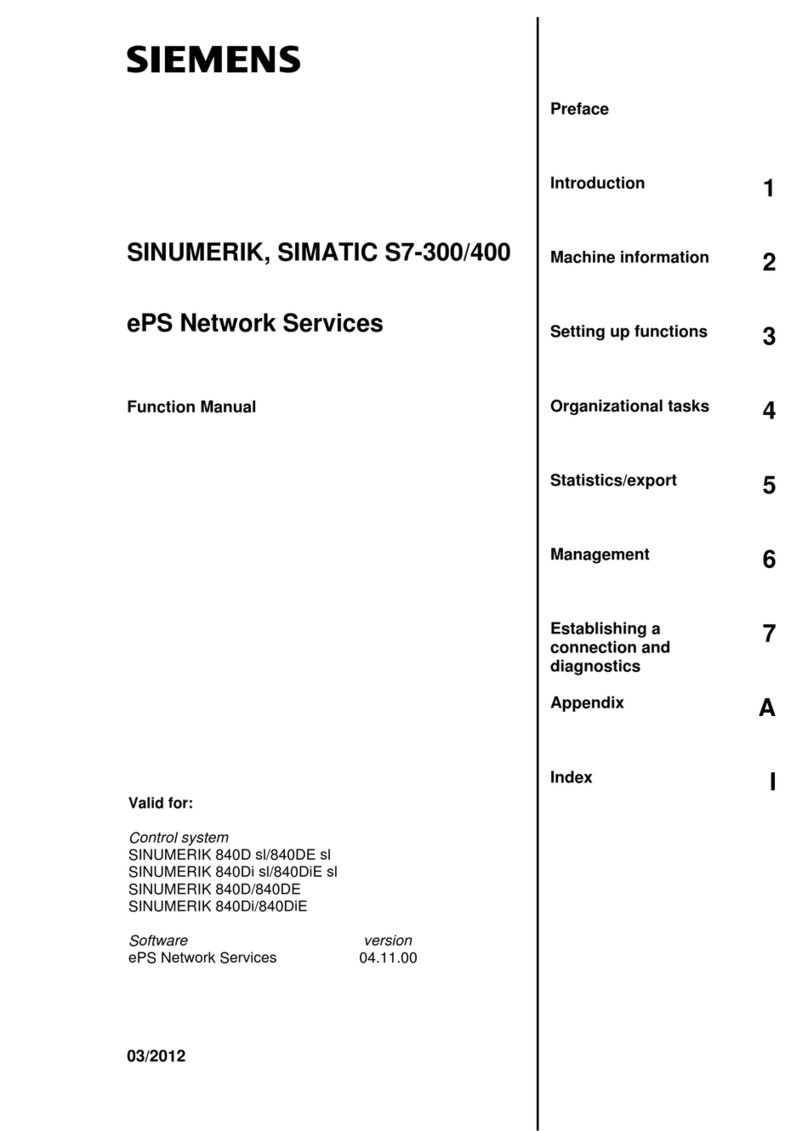
Siemens
Siemens SINUMERIK Series Function manual
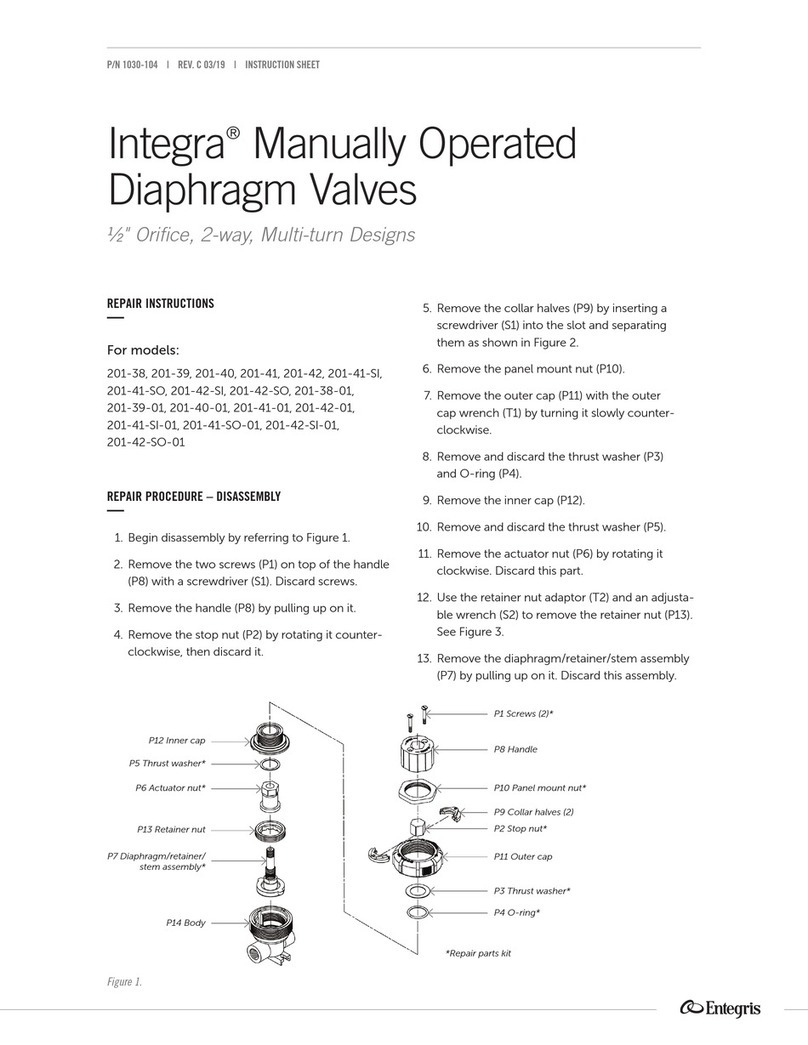
entegris
entegris Integra 201-38 instruction sheet
